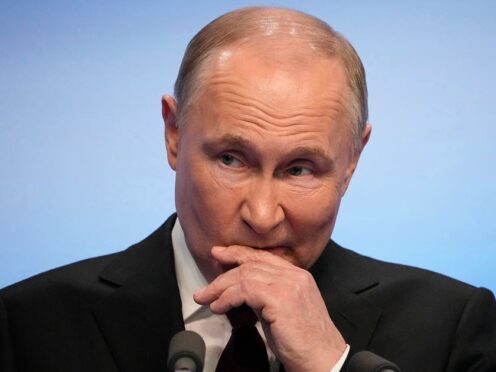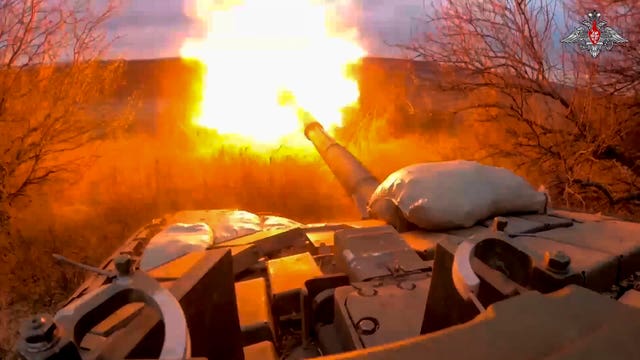
Russian plans to hold drills simulating the use of tactical nuclear weapons, the defence ministry has announced, days after the Kremlin reacted angrily to comments by senior Western officials about the war in Ukraine.
The exercises are in response to “provocative statements and threats of certain Western officials regarding the Russian Federation,” the defence ministry said in a statement.
It is the first time that Russia has publicly announced drills involving tactical nuclear weapons, though its strategic nuclear forces regularly hold exercises.
Tactical nuclear weapons have a lower yield compared to massive warheads that arm intercontinental ballistic missiles intended to obliterate entire cities.
The announcement appeared to be a warning to Ukraine’s Western allies about becoming more deeply involved in the more than two-year war.

French President Emmanuel Macron repeated last week that he does not exclude sending troops to Ukraine, and UK Foreign Secretary Lord David Cameron said Kyiv’s forces will be able to use British long-range weapons to strike targets inside Russia.
The Kremlin branded those comments as dangerous, heightening tension between Russia and Nato.
Tactical nuclear weapons include air bombs, warheads for short-range missiles and artillery munitions and are meant for use on the battlefield.
The ministry said the exercise is intended to “increase the readiness of non-strategic nuclear forces to fulfil combat tasks” and will be held on President Vladimir Putin’s orders. The manoeuvres will involve missile units of the Southern Military District along with the air force and the navy, it said.
Meanwhile, Ukrainian drones hit two vehicles on Monday in Russia’s Belgorod region, killing six people and injuring 35 others, including two children, local authorities said, in an area frequently struck by Kyiv’s forces in recent months.
One of the vehicles was a minibus that was carrying farm workers, Belgorod governor Vyacheslav Gladkov said.
No other details were immediately available, and it was not possible to independently confirm the report from the border region.
While Ukraine’s army is largely pinned down on the 600-mile front line due to a shortage of troops and ammunition after more than two years of fighting, it has used its long-range firepower to hit targets deep inside Russia.
On Ukraine's Infantry Day, we honour our warriors who carry out the most difficult frontline tasks, destroy the occupier under any circumstances, and protect our country and people.
I thank everyone in the Ukrainian infantry for their service, character, daily heroism, and for… pic.twitter.com/6jbBE7fWOi
— Volodymyr Zelenskyy / Володимир Зеленський (@ZelenskyyUa) May 6, 2024
The apparent aim is to disrupt Russia’s war logistics system by hitting oil refineries and depots, and unnerve the Russian border regions.
The Belgorod region was a staging ground for Russia’s full-scale invasion of Ukraine in February 2022. It has come under regular attack ever since Russian forces retreated there from north-eastern Ukraine early in the war following a counter-offensive by Kyiv.
In what has largely been a war of attrition, Russia has also relied heavily on long-range missile, artillery and drones to wreak damage on Ukraine.
At the end of last year, Belgorod officials said 25 people were killed, including five children, and more than 100 were injured in a Ukrainian attack, and regular rocket and drone strikes have continued since then.
The area can be reached by relatively simple and mobile weapons such as multiple rocket launchers from forests on the Ukrainian side.
Russian authorities said in March they planned to evacuate about 9,000 children from the area because of continuous shelling, after Mr Putin said he wanted to create a buffer zone to help protect border regions.

Enjoy the convenience of having The Sunday Post delivered as a digital ePaper straight to your smartphone, tablet or computer.
Subscribe for only £5.49 a month and enjoy all the benefits of the printed paper as a digital replica.
Subscribe